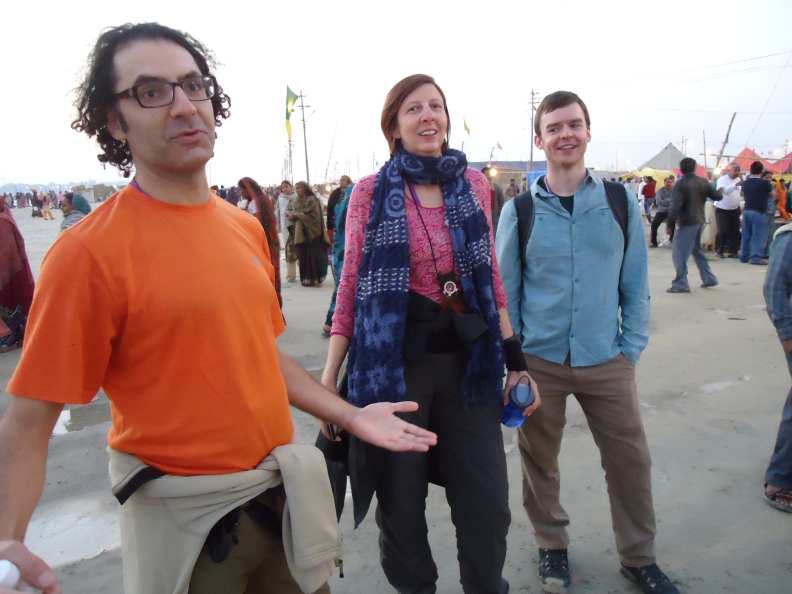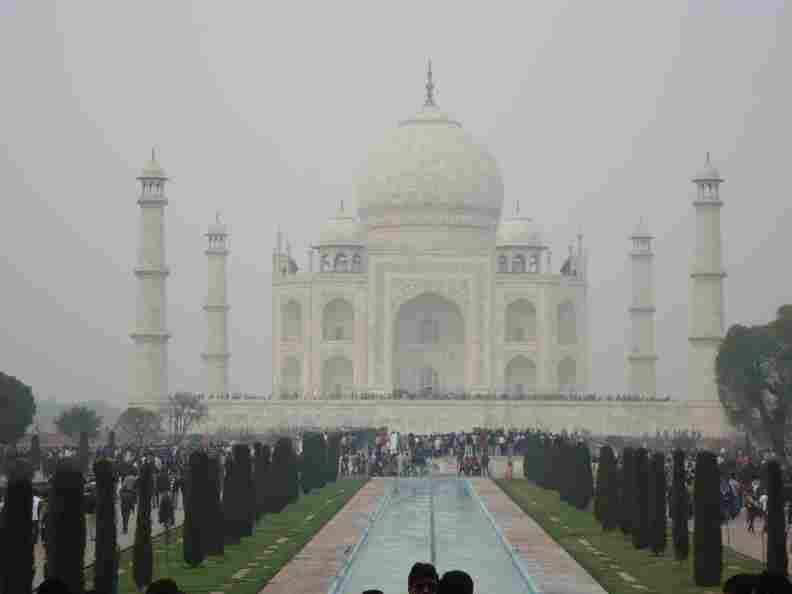Allahabad, India
AS PUBLISHED ON YOGA NATION
The night before the massive influx of pilgrims to the Kumbha Mela, a massive, pop-up spiritual congregation in Allahabad, India, Ali, Stewart, Cathy and I snuck off the Himalayan Institute campus. February 10th was going to be an “auspicious bathing day”—a very special day to take a dip in the Ganges—under a new moon, a time to let go of the past—habits, events, troubles—and inaugurate new beginnings. We wanted to see it up close, for ourselves.
In fact, ten MILLION people were expected. One million were already on site. We wanted to go into the Kumba at night, to see a different Mela.
We wanted to go before the swelling masses became impassable. Not to mention potentially hazardous. (post script: one of the makeshift pontoon bridges across the Ganges collapsed, and some pilgrims did die…)
We also wanted to escape what has come to feel like a very pleasant and highly scheduled summer camp on the H.I. Allahabad campus.
Why not? says Ali
We set off at 5pm aftert signing out at the Himalayan Institute’s main gate, knowing that we would miss dinner. We walked the mile up the Ganges over uneven goat paths and piles of trash.
For the first time, my feet did not hurt in spite of my blisters. It was exciting to be out of the herd. We reached the first and second gates into the Mela in a buoyant mood.
First gates — advertising for holy men is everywhere
We didn’t have to go far to encounter something spectacular: a steady line of pilgrims coming across the first bridge. They were hunched under bags of bedding striving forward with their walking sticks.
It was sunset, and the sight of all those scarved heads and sandaled feet crossing the river at dusk with such purpose was pretty impressive.
It gave us all a deep feeling for the importance of the pilgrimage, the scale of it in people’s lives. There’s no way that other huge festivals—such as Burning Man or Brazil’s Carnaval—could have such a massive feeling of sweet purpose.
Setting sun illuminates pilgrims
Past the second gate and down a side road we entered the main grounds of the Mela. People were walking, bathing, attending talks, but most were cooking over wood fires.
Those who weren’t already encamped in a tent camp, simply slept bundled up person to person on the side of the road. The sheer number of people was astounding, and the vibe—so different from a few days before, in the afternoon—was of purposeful excitement.
The air was burning with smoke
We walked pretty easily through the masses of people streaming past us, no jostling, no harassment, except for the very gentle delight of every single Indian (it seemed) to have their photos taken. Or to take photos of us, the impossibly light skinned people.
“Single photo! Single photo!” shrieked the children we passed, waving madly at us. “Tata! Tata!” (tata = goodbye)
Walking through swarms of pilgrims
We didn’t go into any of the makeshift palaces that lit up the main streets like Las Vegas, but we window-shopped.
In one, an allegorical play was underway (we understood nothing, but the costumes were fab).
In another much more modest one, a man with long wooden earrings was dancing a very feminine dance on a stage lined with male musicians.
KM spectacles
In yet another, a group of very pale Westerners sat around a ceremonial fire (kund) with zombie expressions on their faces throwing offerings of herbs and flowers into the flames. We looked, but we didn’t taste.
Ali was eager for snacks since we’d missed dinner back on campus. Truth be told, we were eating so much (3 very good meals a day) that I was not hungry at all.
But the snack stand was interesting. Ali bought dried and spiced chick-pea sticks mixed with dried peas, served in little cones of Indian newspaper. Yummy.
Night snacks
Finally, our eyes were streaming from the fire smoke and the wandering around began to be painful. We were coughing and a wee bit concerned to get back to campus not too late after our agreed-on time.
For a disorienting 1o minutes we argued about directions and took a few wrong turns (to some dark and smelly corners of the Mela)—but then Stewart expertly guided us back to the road we needed.
We arrived back—smokey and tired, but exhilerated—just before 10pm. And it seemed that back in the Mela many of the more energetic and vocal camps were just getting their kirtans started.
The chanting, singing, preaching, and “swa-ha”s went on all night, as usual. They were loud and fervent and clashing and wonderfully chaotic.
Ah, KM, so much to offer, so hard to decipher.
Sunset downstream from the Mela












